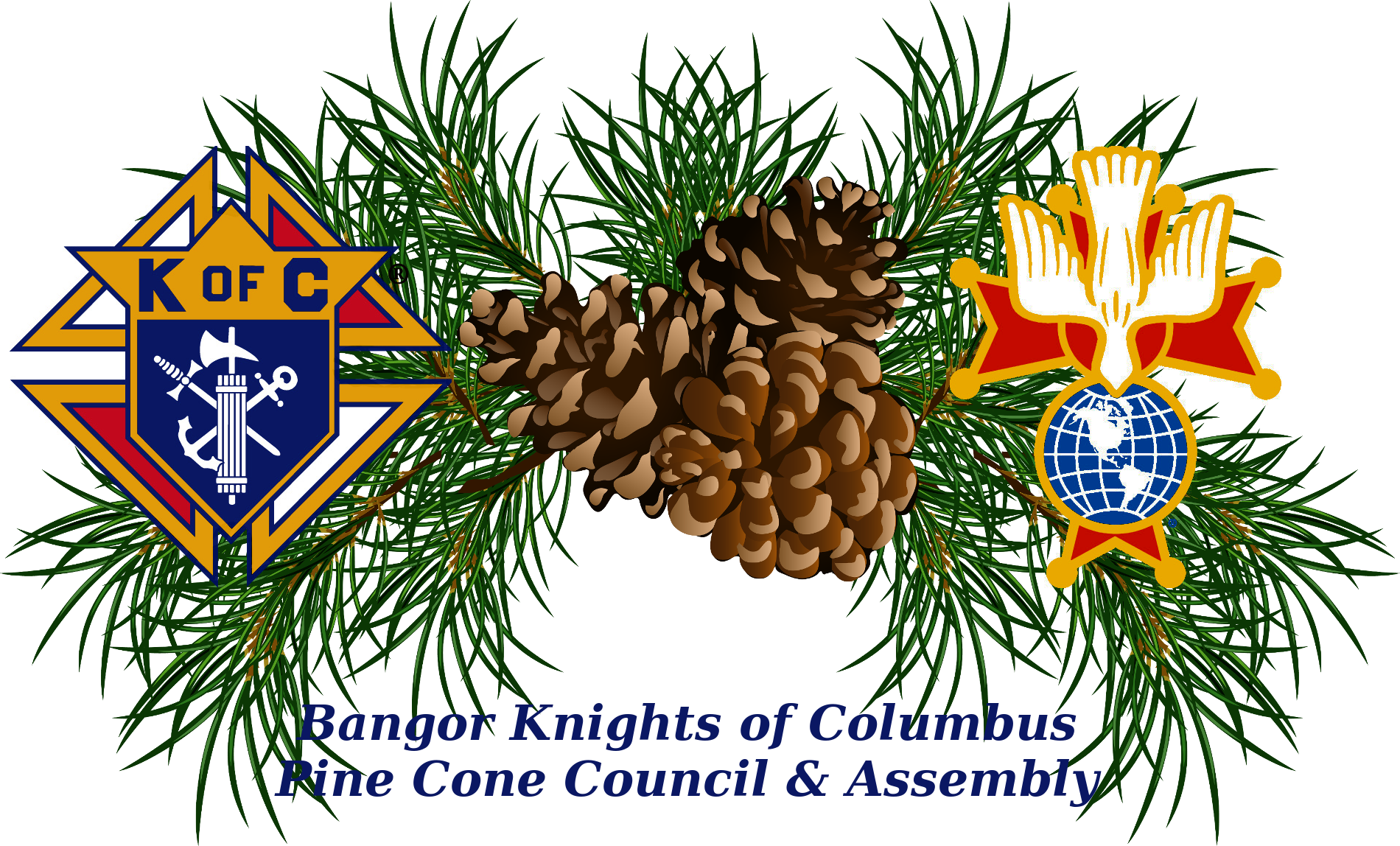About
History of the Knights of Columbus (from KofC.org)
On Oct. 2, 1881, a group of men met in the basement of St. Mary’s Church on Hillhouse Avenue in New Haven. Called together by their 29-year-old parish priest, Father Michael J. McGivney, these men formed a fraternal society that would one day become the world’s largest Catholic family fraternal service organization.
They sought strength in solidarity, and security through unity of purpose and devotion to a holy cause: they vowed to be defenders of their country, their families, and their faith.
These men were bound together by the ideal of Christopher Columbus, the discoverer of the Americas, the one whose hand brought Christianity to the New World. Their efforts came to fruition with the incorporation of the Knights of Columbus on March 29, 1882.
They were Knights of Columbus.
The Order has been called "the strong right arm of the Church," and has been praised by popes, presidents, and other world leaders for support of the Church, programs of evangelization and Catholic education, civic involvement, and aid to those in need.
Father McGivney’s founding vision for the Order also included a life insurance program to provide for the widows and orphans of deceased members. The Order’s insurance program has expanded substantially to serve more effectively the Knights’ growing membership. Year after year, the Knights of Columbus has earned the highest possible quality ratings for financial soundness from outside ratings agencies. The Order provides the highest quality insurance, annuity, and long-term care products to its members, along with many other fraternal benefits.
The Supreme Council is the governing body of the Knights of Columbus and is responsible for the development of the organization as a whole. Supreme Council duties include establishing the Order in new regions and setting up regional authorities, defining and advancing its values and goals, undertaking organization-wide initiatives, promoting awareness of the Knights’ mission worldwide, and protecting the families of members through its extensive insurance program. Members working in local, or subordinate, councils carry on the majority of the Knights’ beneficial work.
(For additional information on the Knights of Columbus' history, please visit the Knights of Columbus website.)
According to District Deputy Jon Harvey, two new Councils were chartered in Poland in 2012. There is now a Council in Lithuania (2013) and it appears that one is on the way in Ukraine. In 2012, the Knights of Columbus raised $167.5 million for various charitable works. In addition, 70 million volunteer hours were donated through the Knights in 2012. The United States government values a volunteer hour at approximately $20. Therefore the total value of the Knights' volunteer hours alone in 2012 was $1.4 billion.
Pine Cone Council 114 (Bangor)
Pine Cone Council #114 of the Knights of Columbus serves the churches of St. Paul the Apostle Parish in the Greater Bangor area. Our members come from St. Gabriel (Winterport), St. John (Bangor), St. Joseph (Brewer), St. Mary (Bangor), St. Matthew (Hampden), and St.Teresa (Brewer). In 2013, Pine Cone Council 114 raised $5,000 in the Tootsie Roll Campaign to help Disabled Citizens; across Maine, the Knights raised $80,000.
The Pine Cone Council became Maine's third Council on January 20, 1895 according to a centennial article in the Bangor Daily News (May 6-7, 1995). "In the early days of the council, members from many Catholic parishes in eastern and northern Maine were brought together by the Knights. Before other councils were formed, members from Millinocket to Bar Harbor made the journey to Bangor for meetings and special events" reported the BDN. The article notes that in 1927 there were 1,000 members in the Council. However by 1929, the year of the Stock Market Crash, membership had dropped to 300. Membership was at 184 in 1995 according to the article
Greater Brewer Council 6728
I am still gathering information, but according to Brother Paul Bouchard, a Charter Member, the Council "was developed by Fr. Joseph Whitlock in 1975, I believe... If my memory is correct, the late John Gladu (Sr.?) was the first Grand Knight, resigned when he got cancer, and a few years later was again elected to Grand Knight. His son John "Mike" Gladu joined the Council, but I don't know if he transferred to Bangor or not. I do know that there were many men from both St. Teresa's and St. Joseph's at the first degree. The degree was held at St. Teresa's, as were the meetings for a number of years. An attempt to dissolve the council was made, and the GK and some other officers transferred to the Bangor Council. A meeting was called by someone from Old Town Council (probably a District Deputy) for everyone to meet at St. Joseph's and start going again. I agreed to be acting GK for the interim to get it going again. For quite a while we would meet at St. Joseph's for a number of months, then at St. Teresa's for a number of months. I'm not sure if it was exactly 6 months each. Fr. Harvey became a very enthusiastic supporter. I presume the Council was formed from both parishes, but I can't be certain." State Historian Ron Sabourin reported to me that the Greater Brewer Council was incorporated November 2, 1975.
Fr. John Bapst Council 7013 (Hampden/Winterport)
State Historian Ron Sabourin reported that Hampden/Winterport was incorporated December 1, 1977. I'm still working to gather additional information.

